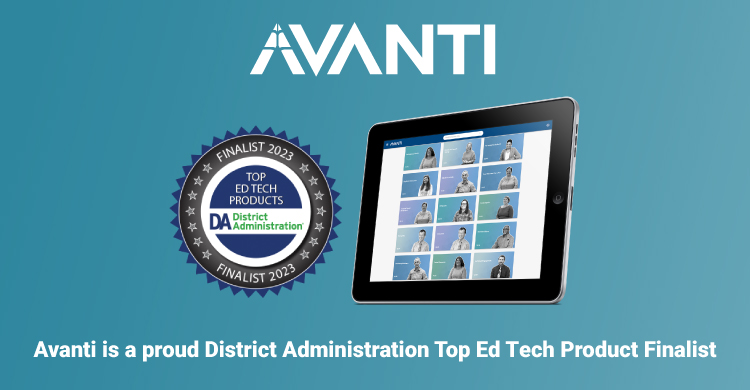Based on Everyday Instructional Coaching
Instructional coaches start off at a disadvantage when teachers associate the coach’s role with change at the classroom level. Even inside a positive culture, if people think you, as a coach, might be attempting change to the structure of norms, defenses go up. But if teachers work in a climate where they feel instructional coaches are trying to help them and learn alongside them, and when coaches transparently share their own flaws and weaknesses in teaching, teachers will open up to their coaches. Teachers will then want to listen and even welcome you with open arms.
One of the foundations of successful teacher teams is a bond of trust between every team member. A team is not just a group of people who work together but a group of people who trust each other. And trust can only exist through transparency.
In a culture of unconventionally high levels of transparency that enable us to redefine and rewrite the legacy and role of impactful teaching, everything is up for questioning and nothing is off-limits. This higher echelon of transparency encourages principals, coaches, and teachers to quickly share failures and mishaps as often as they would want to share kudos and wins. Teachers have the ability to vocalize challenges in the classroom so they may receive support from coaches to help students achieve success. Everyone wins in this new realm of transparency.
We must acknowledge, however, that this kind of transparency also requires a great deal of trust from all stakeholders due to the vulnerability this level of sharing creates.
Transparency drives action because it allows us all to drop our defenses and be palpably honest in our current understanding of what’s happening in our schools and our desire to change what is not working. Transparency advocates full disclosure and trust, which helps remove some of the most difficult barriers in communication and team culture. There is a transparency concept of naked service in the business world, but its principles offer many relevant applications to the role of instructional coaching and educational leadership.
Naked Service
Patrick Lencioni coined the term naked service to describe the vulnerability a service provider should have with its clients and customers. Lencioni’s work has helped leaders and their teams create thriving organizations, and their collective achievements reveal that by having complete transparency and vulnerability with their clients, leaders can build radical levels of trust and loyalty that far surpass anything they have previously experienced. Uniquely, this degree of service questions the traditional approach of service providers: trying to convince their customers that they know all the right answers and that they don’t make mistakes. Customers find this “perfect” persona inauthentic and often find it manipulative.
Obstacles to Transparency
Why do people resist being transparent? They resist because of fear. These fears, if not addressed, create barriers to trust, loyalty, and transparency between organizations and their customers. Patrick Lencioni characterizes these three fears:
-
Fear of losing the business
Organizations can be so hyperfocused on not losing customers or money that they develop a fear that thwarts them from engaging in challenging conversations with their clients. Even though a difficult conversation may cause some initial discomfort, the outcome develops loyalty and trust. Clients want assurances that the mission of an organization encompasses a desire to meet the clients’ needs more than to protect the organization’s revenue streams.
-
Fear of being embarrassed
It’s disconcerting to publicly make mistakes or have failures exposed in front of others. This fear keeps service providers from sharing their mistakes because of a perceived notion of needing to be right or perfect. Naked-service providers proactively ask questions and make bold statements, even at the risk of getting proven wrong or exposing an area of weakness. Clients develop trust in service providers when the service providers conquer this fear and demonstrate that they will not hold back their ideas or mask failures for the sake of appearing flawless.
-
Fear of feeling inferior
In this context, Lencioni (2010) sources the fear of feeling inferior as more rooted in social and emotional perceptions than in intellectual ones (like the fear of being embarrassed). Naked-service providers focus on doing what the client needs rather than just trying to be important to the client.
Combating These Fears in the School
How do Lencioni’s findings relate to instructional coaches’ work with teachers? Coaches are like the service providers, as they meet the needs of their clients (in this case, teachers). Teachers become the recipients of support and services to meet their needs (such as instructional support, learning-environment support, and so on).
We can recontextualize the fear of losing business as a fear of losing likability in the context of coaches. Coaches desire to become trusted confidants; therefore, they consider likability an important factor. However, if coaches don’t overcome this fear, they will not have the difficult conversations necessary to establish meaningful relationships or provide helpful feedback for professional growth. The work of a coach is truly relentless. It’s not just about having a vast knowledge of teaching strategies. Coaches are continually discovering and trying out new teaching practices and engaging in transparent conversations about what works and what doesn’t.
We can directly connect the fears of being embarrassed and feeling inferior to the coach-teacher relationship as well. Because of the perceived role of the instructional coach as a master teacher, coaches may place an unnecessary burden on themselves to appear to have expertise in all aspects of teaching. Although I’m being tongue-in-cheek here, these are very real fears. Even though we may hear that our job as coaches is to work alongside teachers to illuminate strengths and identify growth opportunities, we can’t help but give credence to these fears and question ourselves. What if the teacher learns that I’ve never taught that grade or subject? What if the teacher finds out I wasn’t a reading specialist? What if the teacher finds out I’m not a mathematician?
But don’t teachers have these same insecurities about themselves? Will the coach validate my opinions if I’m only a second-year teacher? Will the coach label me as old school, and set in my ways, because of my many years of experience? Will the coach think I’m an effective teacher after observing me?
During the initial meeting between a coach and a teacher, coaches should first break the ice by sharing their insecurities. This not only conquers the fears of embarrassment and inferiority but also disarms teachers so they can feel more comfortable in sharing insecurities. Teachers will appreciate the coach’s human imperfections, which will allow them to start building trust to cultivate a relationship.
Teachers have not traditionally been given a voice to express concerns or share problems with a school leader. In toxic school cultures, leaders have even labeled teachers who share their concerns as troublemakers or pot stirrers. But a transparent culture of respect frequently exposes problems, and it positions coaches to function as intermediaries between problems and solutions. When coaches promote transparency through a supportive and trusting culture, teachers are willing to bring up issues. Exposing problems frequently creates opportunities for collaborative solutions.
Coaches and leaders must make transparency a guiding principle and a building norm to create a healthy problem-solving culture. Modeling this kind of no-holds-barred mentality in which everything is fair game for discussion can turn a stagnant culture into a thriving one that hinges on open communication, sincere relationships, and trusted leaders.[author_bio id=”1325″]






